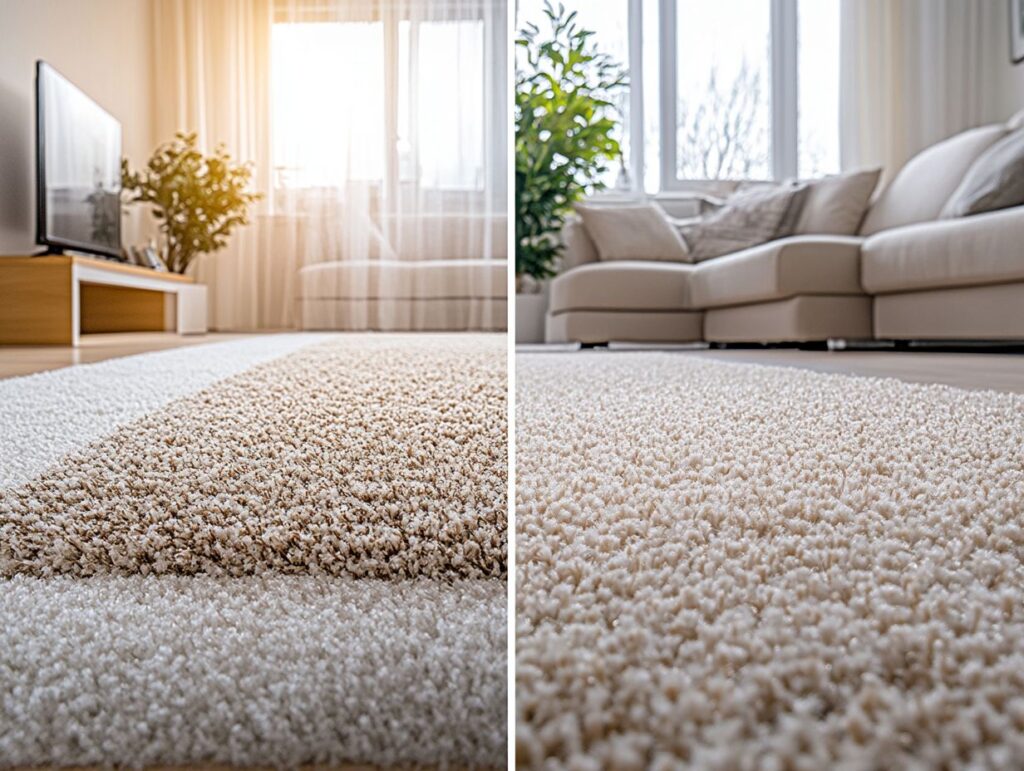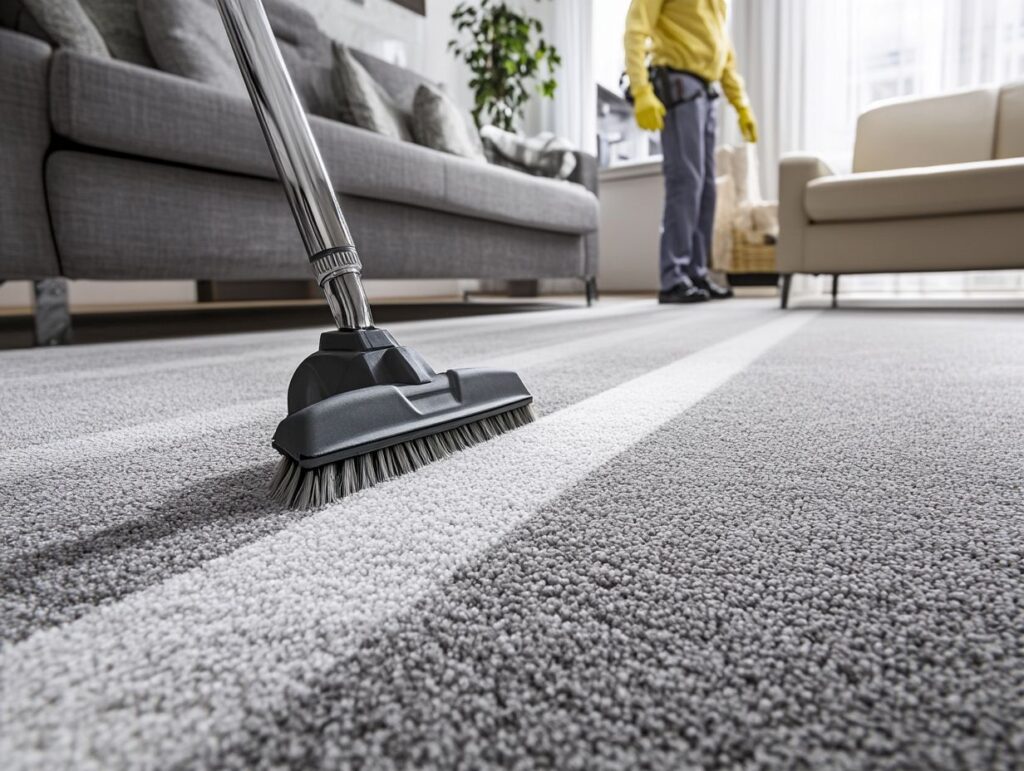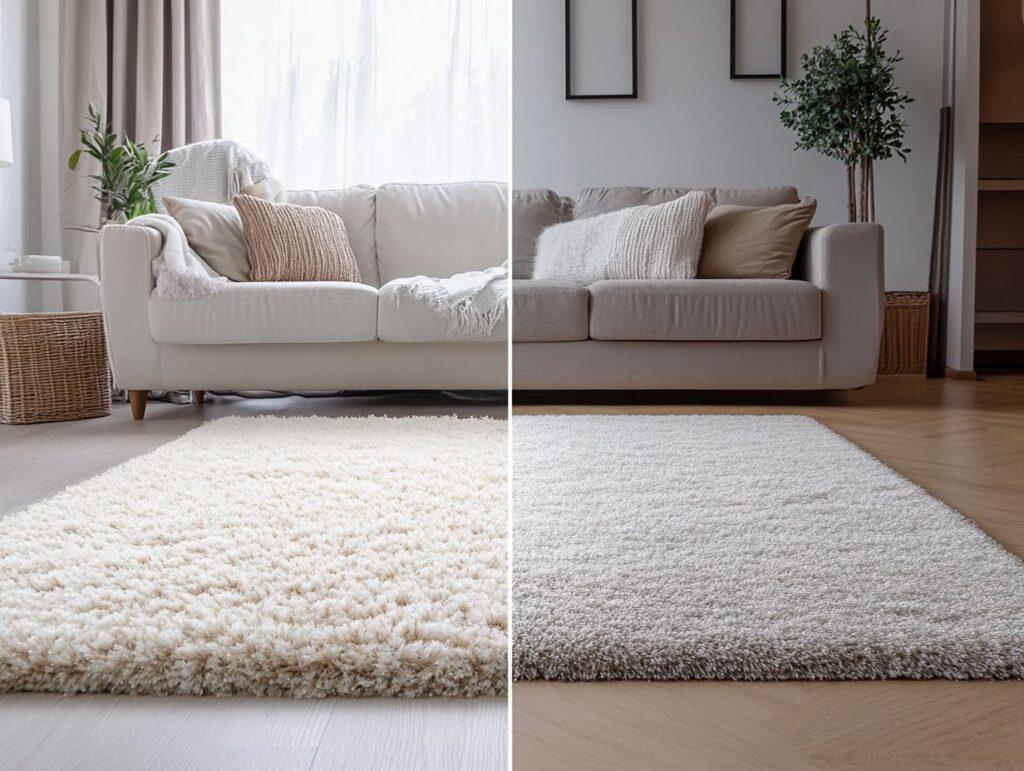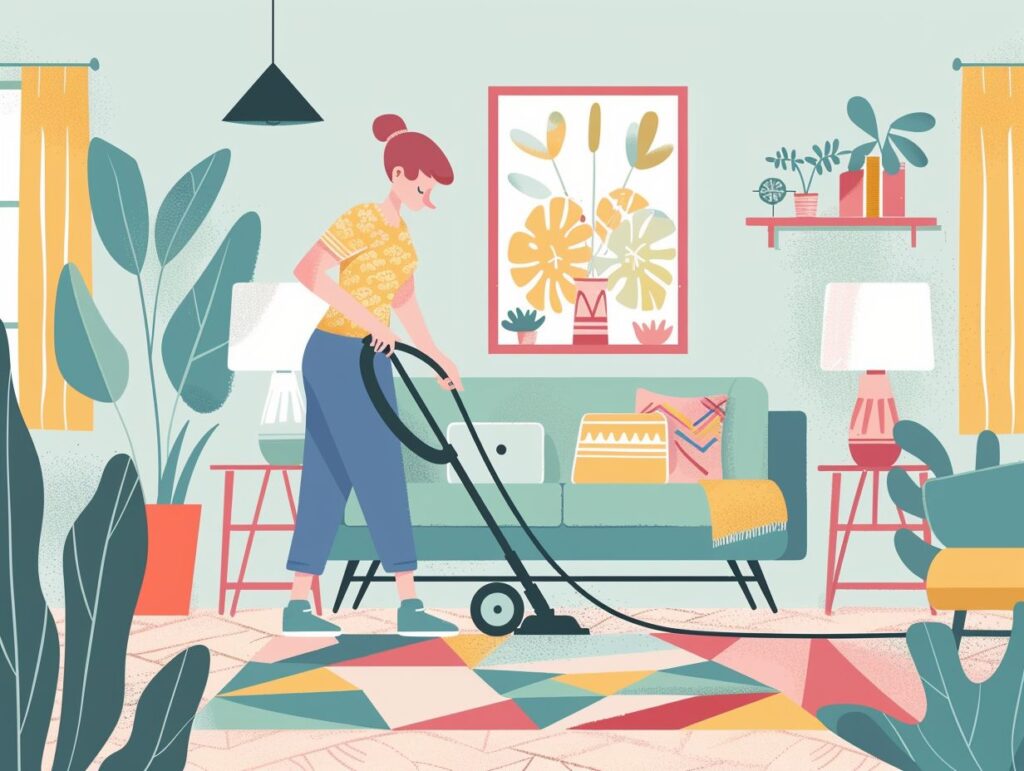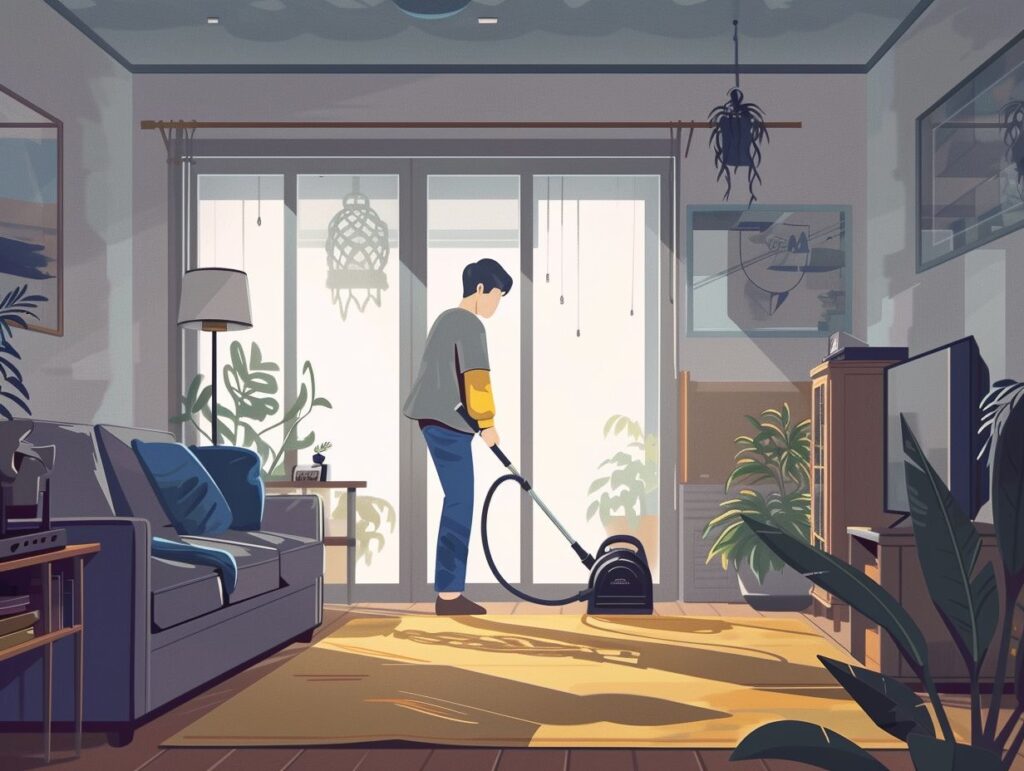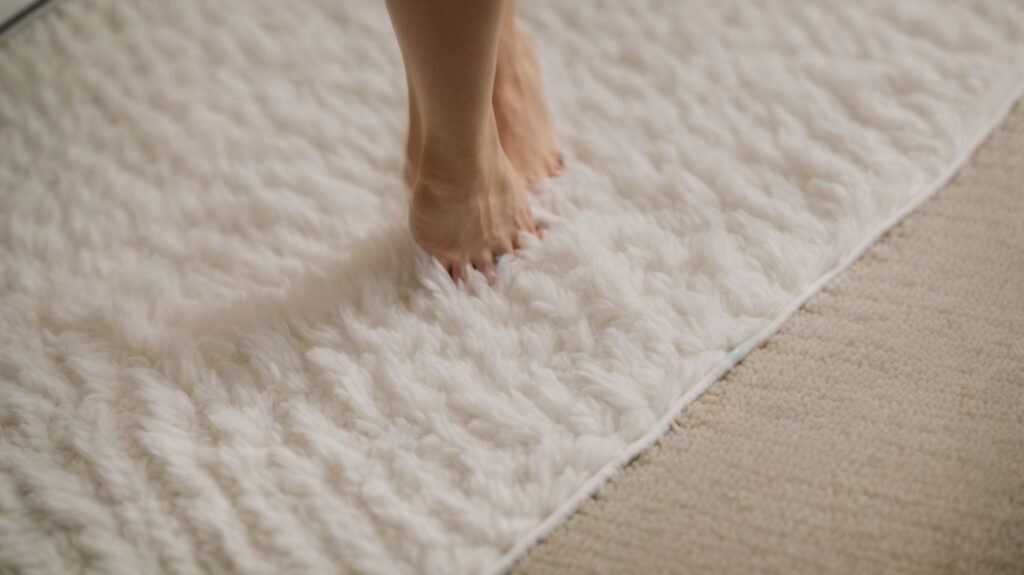Are you tired of stubborn stains ruining the look of your carpets?
Discover various DIY stain removal techniques using everyday household items like baking soda, vinegar, and hydrogen peroxide. We will also compare the benefits and drawbacks of DIY versus professional stain removal methods such as steam cleaning and dry cleaning.
By the end, you will have a better understanding of which method is best suited for your specific needs. Say goodbye to those pesky stains!
DIY Stain Removal Techniques for Carpets
DIY methods can be cost-effective and efficient when removing stains from carpets.
Utilising household items like bicarbonate of soda can effectively tackle tough stains. Begin by blotting the stain with a clean cloth to absorb as much liquid as possible. Sprinkle bicarbonate of soda over the affected area and let it sit for about 15 minutes to absorb the stain. Next, mix a solution of equal parts vinegar and water and spray it over the bicarbonate of soda. Gently scrub the area with a soft brush or cloth, then rinse with clean water and blot dry. This method is not only eco-friendly but also budget-friendly!
Using Baking Soda and Vinegar
One popular DIY method for carpet stain removal involves using bicarbonate of soda and vinegar, known for their natural cleaning properties.
Combined, these two household items create a powerful fizzing reaction that can help break down and lift stains from the carpet fibres. To start, sprinkle a generous amount of bicarbonate of soda over the stained area and let it sit for about 30 minutes to absorb moisture and odours.
Then, mix equal parts vinegar and water in a spray bottle and spray it over the bicarbonate of soda. The bubbling action helps loosen the stain. After letting it sit for 15-20 minutes, dab the area with a clean cloth and repeat until the stain is lifted.
A necessary precaution is always to test a small, hidden carpet area first to ensure the solution does not cause any damage. This method is particularly effective for tackling common stains like pet accidents, food spills, and mud tracks.
Once the stain is removed, it is recommended to rinse the area with water and pat dry to prevent any residue from attracting more dirt. Regular vacuuming and occasional steam cleaning can help maintain the cleanliness and freshness of your carpets.
Using Club Soda
Club soda is often recommended as a DIY solution for tackling carpet stains effectively and quickly.
Its bubbling action helps lift stains to the surface, making them easier to remove. To use club soda for stain removal, start by blotting the affected area with a clean cloth to soak up any excess liquid. Once done, pour club soda directly onto the stain, ensuring it covers the affected area. Allow the club soda to sit on the stain for a few minutes, giving it time to work its magic.
Afterwards, gently blot the area again to absorb the loosened stain particles. For stubborn or dried stains, repeat the process until the stain fades. Remember to use a white cloth for blotting to prevent colour transfer. A carpet brush or sponge can help agitate the club soda into the fibres for better penetration. Always blot, rather than rub, to prevent spreading the stain further.
By following these steps and using club soda correctly, you can effectively treat a variety of carpet stains, from spills to pet accidents.
Using Hydrogen Peroxide
Hydrogen peroxide is a standard DIY stain remover that can effectively tackle tough stains on carpets.
Its bleaching and disinfecting properties make it a versatile cleaning agent, suitable for various stains such as wine or blood. To safely use hydrogen peroxide on carpet stains, test it on a small, inconspicuous area to check for any adverse reactions. Once safe, dilute the hydrogen peroxide with water for milder stains or apply it directly to stubborn ones. Allow the solution to penetrate the stain briefly before gently blotting it with a clean cloth. Remember to wear gloves and work in a well-ventilated area to avoid any potential irritations from the fumes.
Using Dish Soap and Water
A mixture of washing-up liquid and water can be an effective DIY solution for removing common carpet stains.
This simple yet powerful remedy works wonders on various stains, including food spills, mud tracks, and pet accidents. Mix a few drops of washing-up liquid with warm water in a spray bottle to use this method. Gently spray the solution onto the stained area and let it sit for a few minutes to loosen the stain. Using a clean cloth, blot the area to lift the stain. For best results, avoid scrubbing vigorously, as this may damage the carpet fibres. Remember to test the solution on a hidden carpet area to ensure colourfastness first.
Benefits and Drawbacks of DIY Stain Removal
DIY stain removal offers the benefits of cost-effectiveness and convenience, but it may require more time and effort than professional services.
One key advantage of tackling stains yourself is the level of control you have over the process. DIY methods allow you to choose the exact products and techniques used, giving you the power to tailor the approach to suit the specific needs of your stain. This level of customisation ensures that you can address the issue promptly and according to your preferences. Immediate action can be taken when you notice a stain, preventing it from setting in and becoming more challenging to remove.
Pros:
DIY stain removal offers various benefits, including cost-effectiveness, quick solutions, and prompt addressing of stains.
One critical advantage of tackling stains is the immediate availability of remedies—no need to wait for a professional service. It can be beneficial in emergencies when you need to act fast to prevent a stain from setting. DIY stain removal methods are often more cost-effective than hiring a professional cleaner, saving you money in the long run. The sense of accomplishment from successfully removing a stubborn stain on your own is also incredibly satisfying.
To ensure successful stain removal, experts recommend acting quickly, using the proper techniques for each type of stain, and testing on a small, inconspicuous area first to avoid damaging the material.
Cons:
Whilst DIY stain removal can be cost-effective, it often requires more time and effort, carries potential risks, and may not be as effective for all stains.
One of the critical disadvantages of attempting to remove stains on your own is the labour-intensive nature of the process. DIY methods often involve scrubbing, rinsing, and repeating steps multiple times, which can be physically taxing. Without the expertise of professionals, there is a higher risk of damaging carpets with improper techniques, such as using harsh chemicals or incorrect cleaning tools. Stubborn stains like red wine or ink may also pose a challenge for DIY enthusiasts, as they may lack specialised knowledge or products to tackle them effectively.
Professional Stain Removal for Carpets
Professional stain removal services offer advanced techniques, such as steam cleaning, dry cleaning, and hot water extraction, to effectively tackle stubborn stains on carpets.
Due to trained technicians’ professional expertise, specialised equipment, and chemical solutions, these methods are far more effective than typical do-it-yourself approaches. Steam cleaning involves using hot water vapour to deep clean and sanitise the carpet fibres, while dry cleaning utilises minimal moisture with the help of specialised cleaning compounds. Hot water extraction, also known as carpet shampooing, involves injecting hot water mixed with cleaning agents into the carpet and then extracting it with the loosened dirt and stains. These professional methods ensure the thorough removal of stains and odours, leaving carpets fresh and rejuvenated.
Steam Cleaning
Steam cleaning is a famous professional method for deep cleaning carpets and removing tough stains effectively.
This process involves using specialised equipment that produces high-temperature steam to sanitise and lift stains from carpets efficiently. When tackling carpet stains using steam cleaning, the first step typically involves vacuuming the area to remove debris and loose particles. The next step is to pre-treat any stubborn stains with a cleaning solution before the steam cleaning begins. The high-temperature steam helps break down tough stains, kills bacteria, and removes odours, leaving your carpets refreshed and thoroughly cleaned.
Dry Cleaning
Dry cleaning is a professional method that uses specialised chemicals and cleaning agents to remove stains from carpets without excessive moisture.
This process involves applying chemical solvents to the carpet’s surface to dissolve and lift stains effectively. Unlike traditional wet cleaning methods, dry cleaning minimises the risk of oversaturation, which can lead to mould growth and extended drying times. The low-moisture techniques used in dry cleaning are particularly beneficial for delicate or sensitive carpet fibres that may be damaged by excessive water exposure. Dry cleaning is known for quick drying times, making it a convenient option for busy households or commercial spaces.
Hot Water Extraction
Hot water extraction, also known as carpet steam cleaning, is a professional method that uses hot water and cleaning solutions to deep clean carpets.
This process involves using specialised equipment, such as a powerful truck-mounted or portable extraction machine, that combines hot water and detergent into the carpet fibres. As the hot water penetrates deep into the carpet pile, it helps to break down dirt, debris, and stubborn stains, which are then extracted with a powerful vacuum.
Before the extraction process, professional cleaners may pre-treat high-traffic areas or tough stains to ensure optimal cleaning results. Post-treatment steps typically involve grooming the carpet fibres to enhance their appearance and speed up drying, resulting in revitalised and refreshed carpets.
Chemical Solvent Cleaning
Chemical solvent cleaning is a professional stain removal method that involves the targeted application of specialised solvents to treat specific stains on carpets.
These solvents are designed to effectively break down tough stains like grease, ink, or pet stains, making them easier to remove from carpet fibres.
The application process typically involves applying the solvent directly onto the stained area, allowing it to penetrate and dissolve the stubborn residue. Safety precautions such as wearing protective gloves and ensuring proper ventilation are essential when using chemical solvents to avoid potential health risks.
The efficacy of chemical solvent cleaning can vary depending on the type of carpet fabric, with some fabrics requiring a gentler approach to prevent damage during the cleaning process.
Benefits and Drawbacks of Professional Stain Removal
Professional stain removal offers the benefits of high-quality results, expert maintenance, and effective solutions but may be more expensive than DIY methods.
One key advantage of opting for professional stain removal services is the guarantee of thorough cleaning. Professional cleaners have specialised equipment and expertise to tackle tough stains that regular cleaning methods may struggle with. They use industry-approved products and techniques that ensure the longevity and health of your carpets.
Whilst the initial cost may be higher, the peace of mind knowing that your carpets are receiving expert care can be invaluable. It’s essential to note that professional stain removal may require follow-up maintenance to uphold the cleanliness and condition of your carpets over time.
Pros:
Professional stain removal services offer the advantages of expert care, high-quality results, and practical solutions for even the toughest carpet stains.
Using advanced equipment and specialised techniques, professional cleaners can tackle deep-seated stains that household products often struggle to eradicate. Their expertise in understanding different types of stains and fabrics ensures a tailored approach for each cleaning session. Opting for professional services guarantees immediate results and contributes to the long-term maintenance of your carpets, prolonging their lifespan and keeping them looking fresh and new for years to come.
Cons:
Whilst professional stain removal ensures high-quality results, it may involve higher costs, longer drying times, and potential maintenance requirements post-cleaning.
Costs associated with professional stain removal services can often be significant, especially for tougher stains or delicate fabrics, making it a less budget-friendly option for many consumers.
The extended drying times required after professional cleaning can be inconvenient, leading to downtime where the area or item cannot be used.
Post-cleaning maintenance, such as specialised treatments or regular follow-up cleanings, may be necessary to ensure the longevity of the results achieved through professional services.
Factors to Consider When Choosing Between DIY and Professional Stain Removal
When deciding between DIY and professional stain removal, consider factors such as the type of stain, carpet material, cost, time commitment, and safety concerns.
The nature of the stain is a crucial aspect to consider. Some stains, like wine or ink, may require specific treatment techniques that professionals can efficiently handle. The carpet’s material plays a significant role in the choice of method. Delicate materials may be better suited to professional cleaning to avoid damage. When comparing costs, whilst DIY methods may seem cheaper initially, factoring in potential damage to the carpet from improper cleaning techniques may make professional services more cost-effective in the long run.
Type of Stain
The type of stain on your carpet plays a crucial role in determining whether DIY methods or professional services are more suitable for effective removal.
Food stains, like those caused by spaghetti sauce or fruit juice, are common culprits that require immediate attention. For food-based stains, DIY solutions like a mixture of vinegar and bicarbonate of soda can be highly effective in breaking down the stain.
On the other hand, oil-based stains, like those from butter or grease, may require professional treatment due to their stubborn nature. Understanding the nature of the stain can help you choose the most appropriate removal method, whether it be a DIY remedy or seeking the expertise of professional carpet cleaners.
Type of Carpet
The material and construction of your carpet, including delicate fabrics and colourfastness, influence the choice between DIY and professional stain removal approaches.
- Carpet fibres, pile density, and colour retention properties significantly affect how stains are removed from carpets.
- Different fibres react uniquely to cleaning agents, with wool requiring a gentler touch than synthetic fibres.
- Pile density affects how deeply a stain penetrates the carpet, making it easier or harder to remove.
- During stain removal, colour retention properties impact colour fading or bleeding risk.
When dealing with delicate fabrics or colour-sensitive carpets, opting for specialised treatments that cater to the specific material composition is crucial to avoid damage. Regular maintenance and appropriate cleaning methods tailored to your carpet type can help preserve its appearance and longevity.
Cost
Cost considerations are essential when choosing between DIY stain removal and professional services, with DIY methods generally being more budget-friendly.
- DIY stain removal techniques often involve using everyday household items such as vinegar, baking soda, or hydrogen peroxide, cost-effective alternatives to store-bought chemical cleaners.
- In contrast, professional cleaning services may come with higher upfront costs but can offer long-term savings by preventing damage and extending the lifespan of carpets and upholstery.
- Some budget-friendly alternatives to professional cleaning include hiring carpet cleaning machines or independent cleaners for targeted stain removal, providing a middle ground between DIY and full-service options.
Time and Effort
The time and effort required for stain removal tasks influence the decision between DIY methods, which can be time-consuming, and professional services that offer convenience and expert results.
Whilst tackling stain removal on your own might seem cost-effective, it often involves significant time commitment and labour-intensive efforts. DIY methods, such as creating homemade stain removers or utilising techniques found online, may require multiple attempts and trial and error, leading to frustration.
In contrast, opting for professional services can save you time and energy, as trained professionals have the tools and expertise to remove stains efficiently and precisely effectively. It ultimately comes down to weighing the trade-offs between investing your time and effort in DIY approaches or opting for the convenience and quality assurance of professional cleaning services.
Safety Concerns
Safety considerations are paramount in stain removal tasks. DIY methods require caution in handling chemicals and tools, while professional services implement protective measures and eco-friendly solutions.
Proper ventilation is crucial when working with chemical-based stain removers, as fumes can be harmful when inhaled. Ensuring adequate airflow in the area where the cleaning process occurs helps minimise the risk of respiratory issues.
Using protective gear such as gloves, masks, and goggles is essential to safeguard oneself from potential skin irritation or burns. DIY enthusiasts should carefully follow the handling instructions provided on the product labels to prevent accidents.
On the other hand, professional cleaners are well-equipped with eco-friendly options and advanced protective measures to ensure a safe and healthy cleaning environment for clients and themselves.
